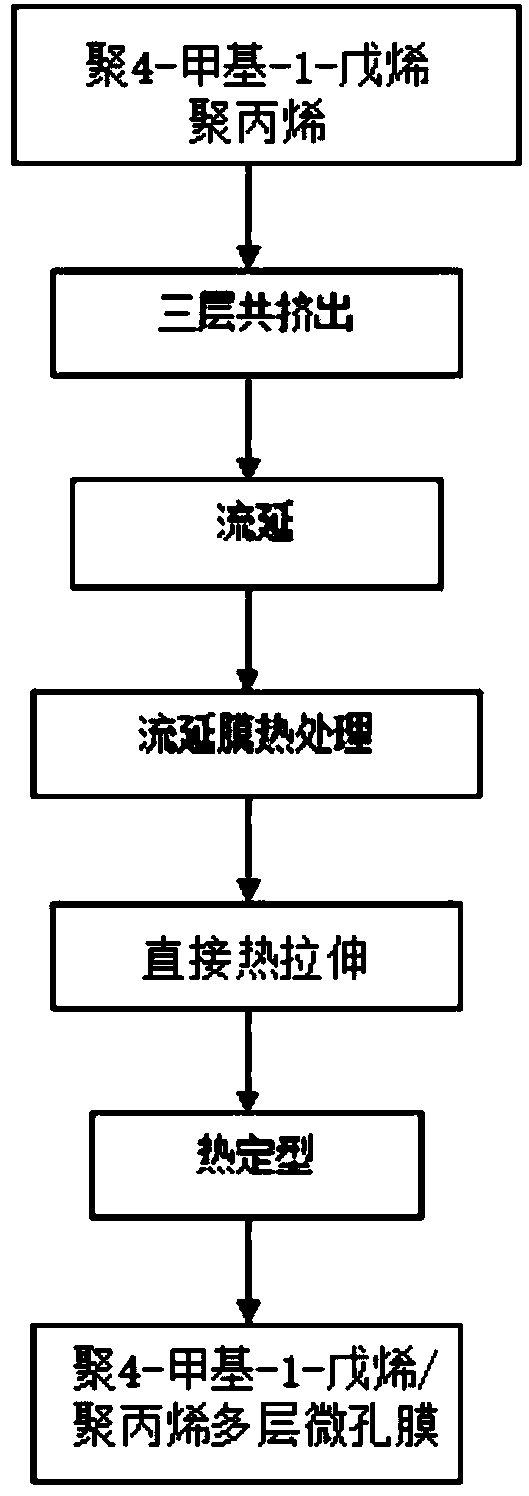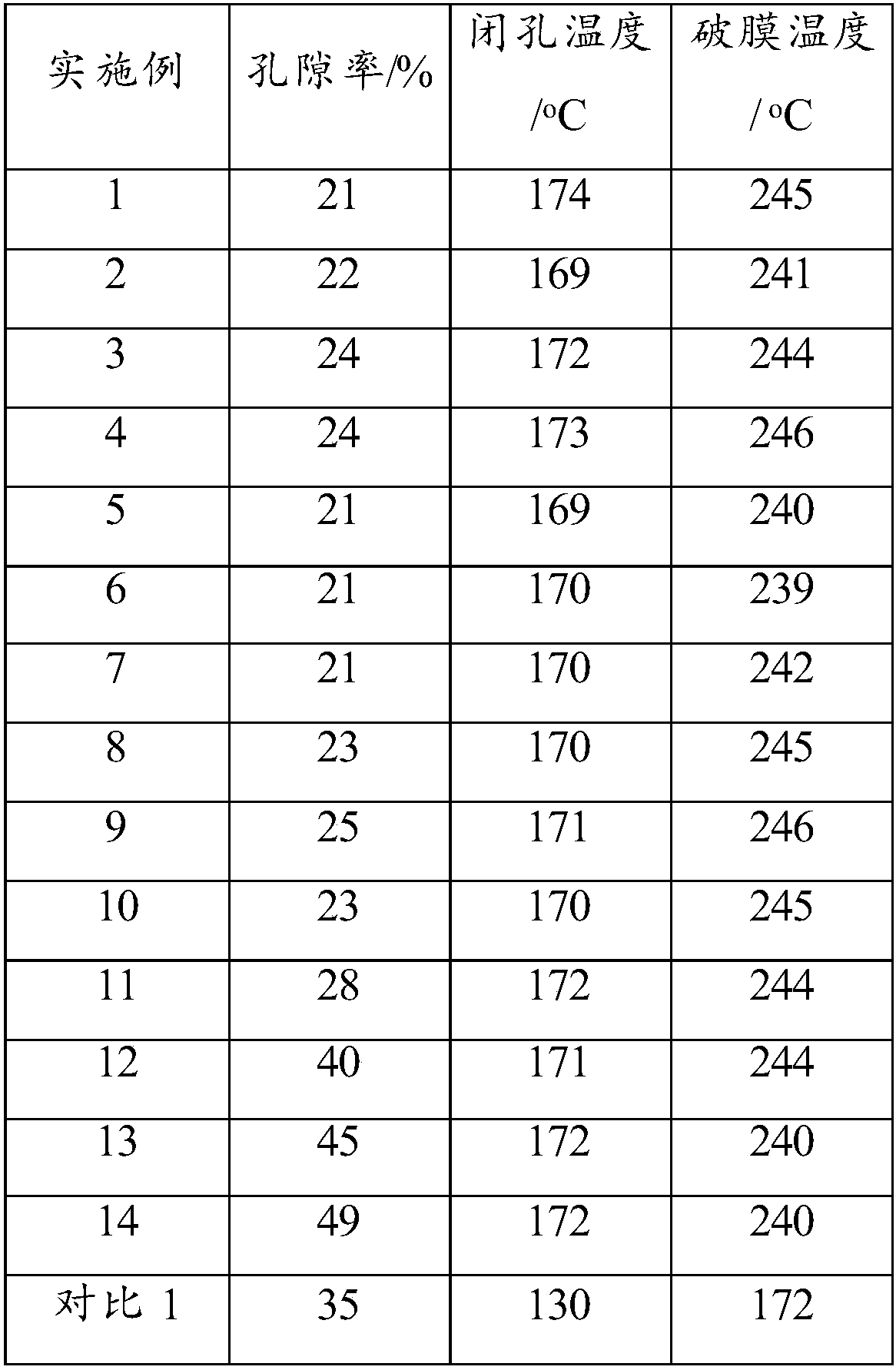Three-layer composite micropore diaphragm and preparation method therefor
A technology of microporous diaphragm and layer compounding, applied in the direction of electrical components, circuits, battery pack components, etc., can solve the problems of a large amount of waste liquid, waste gas, complex production process, poor mechanical properties, etc., achieve good high temperature resistance, simplify Effect of production equipment and process, high membrane rupture temperature
- Summary
- Abstract
- Description
- Claims
- Application Information
AI Technical Summary
Problems solved by technology
Method used
Image
Examples
Embodiment 1
[0037] Add poly-4-methyl-1-pentene with a melt index of 6g / 10min and polypropylene with a melt index of 1g / 10min into different extruders, co-extrude through a multi-layer die, and cast to obtain a three-layer poly-4 - Methyl-1-pentene / polypropylene initial cast film. The temperature of the multi-layer die is 290°C, the casting temperature is 80°C, and the thickness of the casting film is 25um. Heat treatment at 145°C for 0.3h. Direct thermal stretching at 110°C, stretching rate 5mm / min, stretching ratio 100%, heat setting temperature 125°C, heat setting time 25min, to obtain three layers of poly-4-methyl-1-pentene / polypropylene micropores membrane.
[0038] The specific preparation flow chart is as figure 1 shown.
Embodiment 2
[0040] Add poly-4-methyl-1-pentene with a melt index of 32g / 10min and polypropylene with a melt index of 6g / 10min into different extruders, co-extrude through a multi-layer die, and cast to obtain a three-layer poly-4 - Methyl-1-pentene / polypropylene initial cast film. The temperature of the multi-layer die is 250°C, the casting temperature is 80°C, and the thickness of the casting film is 25um. Heat treatment at 145°C for 0.3h. Direct thermal stretching at 110°C with a stretching rate of 5 mm / min. The stretch ratio is 100%, the heat setting temperature is 125° C., and the heat setting time is 25 minutes to obtain a three-layer poly-4-methyl-1-pentene / polypropylene microporous membrane.
Embodiment 3
[0042]Add poly-4-methyl-1-pentene with a melt index of 18g / 10min and polypropylene with a melt index of 2.7g / 10min into different extruders, co-extrude through a multi-layer die, and cast to obtain a three-layer polystyrene. 4-Methyl-1-pentene / polypropylene initial cast film. The temperature of the multilayer die is 275°C, the casting temperature is 80°C, and the thickness of the casting film is 25um. Heat treatment at 145°C for 0.3h. Direct thermal stretching at 110°C, stretching rate 5mm / min, stretching ratio 100%, heat setting temperature 125°C, heat setting time 25min, to obtain three layers of poly-4-methyl-1-pentene / polypropylene micropores membrane.
PUM
| Property | Measurement | Unit |
|---|---|---|
| melt flow index | aaaaa | aaaaa |
| melt flow index | aaaaa | aaaaa |
| melt flow index | aaaaa | aaaaa |
Abstract
Description
Claims
Application Information
 Login to View More
Login to View More - R&D
- Intellectual Property
- Life Sciences
- Materials
- Tech Scout
- Unparalleled Data Quality
- Higher Quality Content
- 60% Fewer Hallucinations
Browse by: Latest US Patents, China's latest patents, Technical Efficacy Thesaurus, Application Domain, Technology Topic, Popular Technical Reports.
© 2025 PatSnap. All rights reserved.Legal|Privacy policy|Modern Slavery Act Transparency Statement|Sitemap|About US| Contact US: help@patsnap.com


